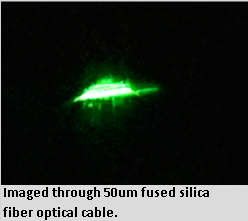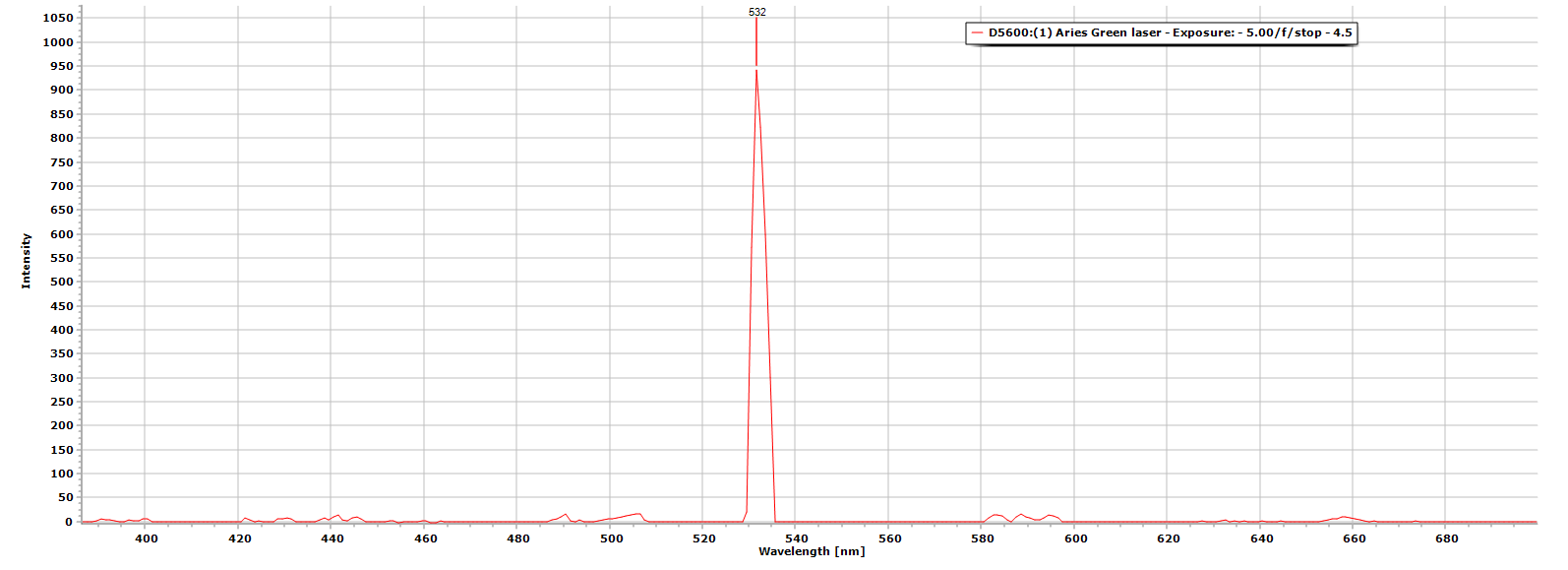I did this experiment as a demonstration to illustrate the importance of technique and skill when it comes to dealing with fiber optical equipment and it's related optics. I do have some experience in this field, thanks to my time in Bell Atlantic and Verizon (telecommunications companies,) yes it is important when dealing with very weak Raman signals that the size of the fiber core is relevant, but is NOT the only gospel in the good book, alignment, aperture size, core material and cladding all play a significant part in acquiring the best Raman signals possible.
That's not the only game in town though, focal length, selecting the correct reflective mirror, diffraction grating and laser selection all work together to achieve a proper Raman spectrum.
I'm presenting a laser spectrum below imaged through a 50um fiber optic cable, very small core, fused silica. I constructed a test platform to simulate the Raman probe with my laser attached and aligned with the fiber optic collimator at the exit area.

This is the laser spectrum itself ( wavelength range set @ 400 - 700nm)



So as you can see, it is possible to successfully image a very weak laser image with proper skill and technique, specs for this image capture are:
f/stop - 4.5 (aperture)
exposure time: 1/60 sec
exposure bias - minus 5 step
focal length - 18mm
 David H Haffner Sr
David H Haffner Sr
Discussions
Become a Hackaday.io Member
Create an account to leave a comment. Already have an account? Log In.